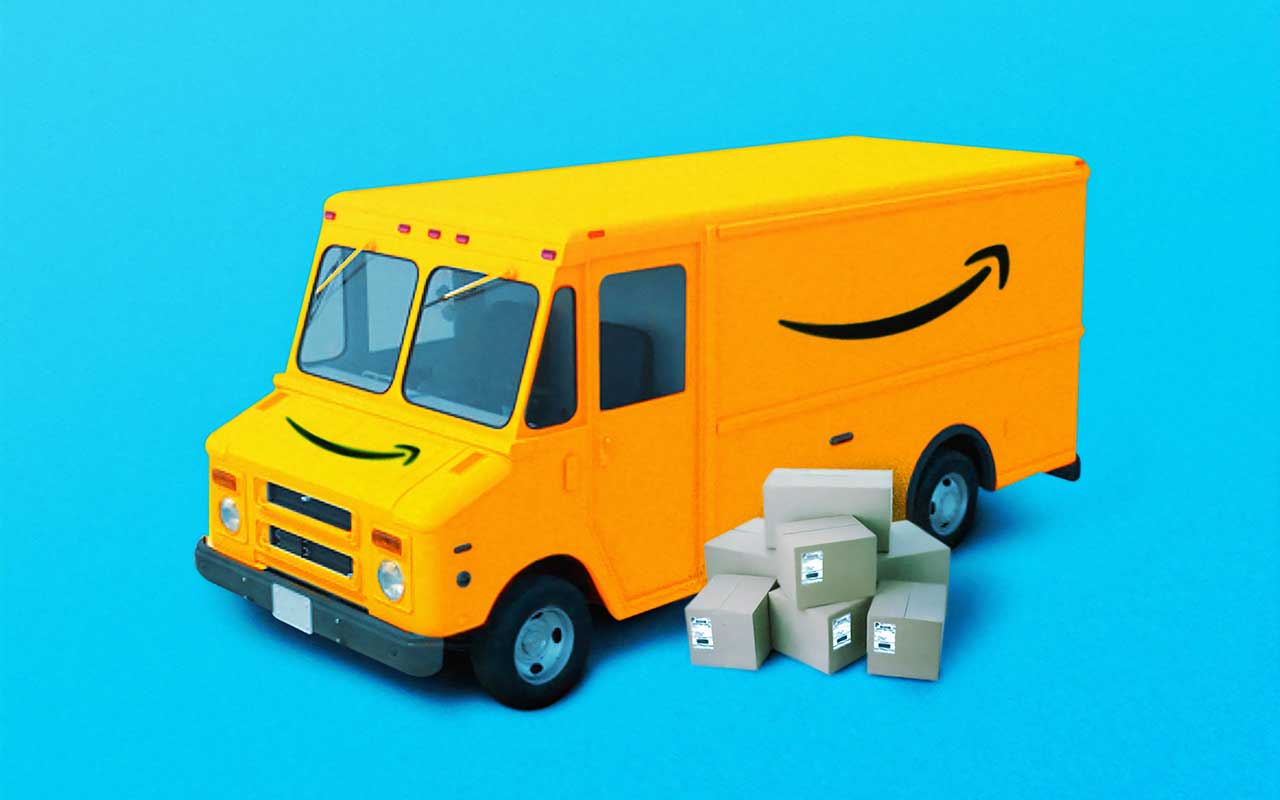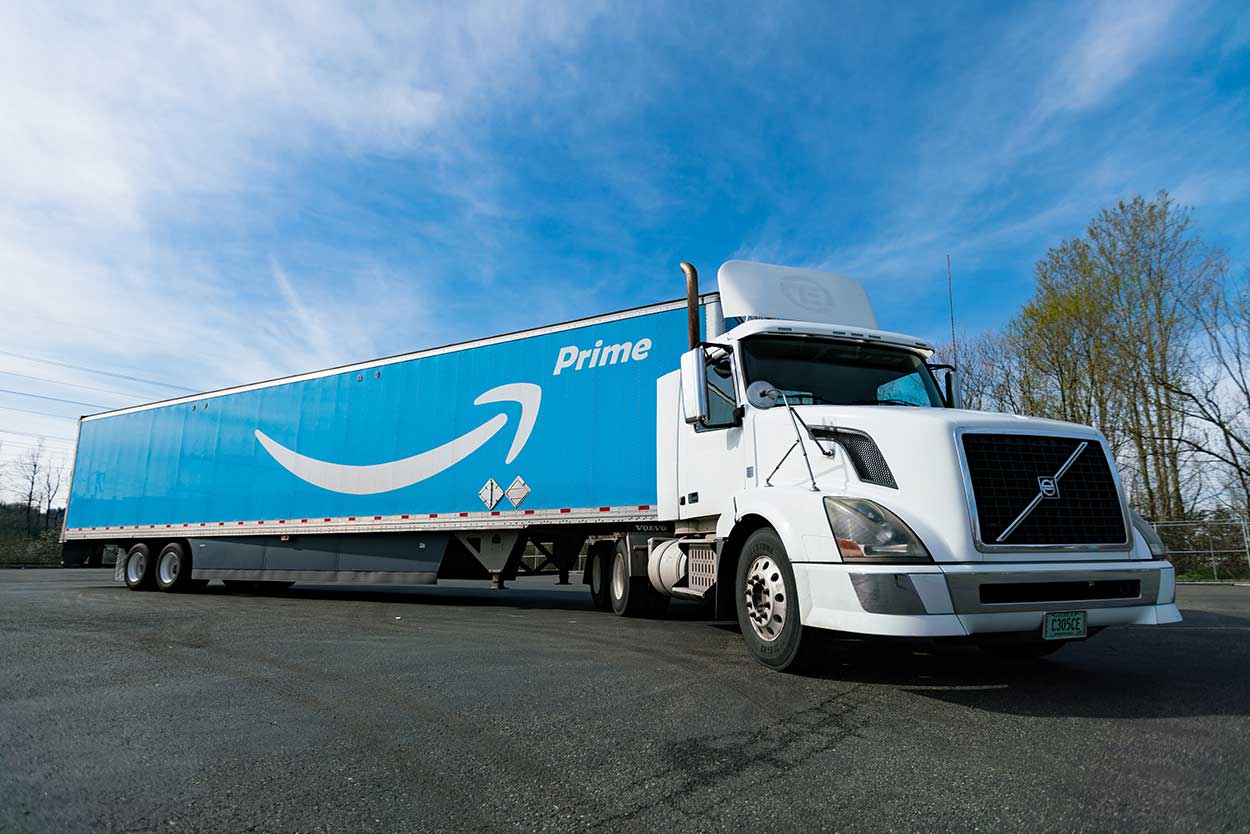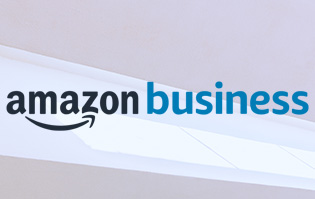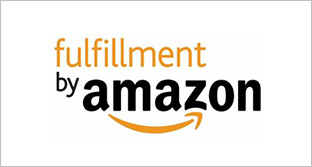How to Sell on Amazon for Beginners: Strategies for Successful Selling
For many years, Amazon has been the online marketplace for customer excellence from all over the world. Global presence, millions of different products, first-class shipping, and excellent customer service are why the Ecommerce giant is able to succeed like no other.
The impressive numbers tell the story. In 2019, Amazon recorded sales of $280 Billion dollars.For more than a decade, the business has been growing year-after-year in the high double-digit percentage range; most recently, global sales have increased by 20 percent.
You will learn what makes online mail order companies attractive to retailers of almost any size and in almost any industry. You will understand how to successfully master the challenges of selling, and what else you need to know to survive in today’s dense product jungle. In a step-by-step guide, we also show you how you can easily register and then post and sell your products on Amazon without in-depth technical knowledge.
By the way, if you already have your own webshop with a product range, this doesn’t create an obstacle to becoming an Amazon seller . On the contrary, when using our listing tool magnalister, you will find ideal conditions for an easy and smooth start. More about the core functions of the magnalister marketplace interface and the 30 day free trial with full functionality can be found here:
CONNECT AMAZON PER MAGNALISTER
Table of Contents
Amazon: More than just a giant international online retailer
Overview of fees: You must be prepared for seller fees when selling on Amazon
How to sell on Amazon: Register as an Amazon merchant and start selling immediately
Platform-specific challenges: a chance for decisive competitive advantages
Conclusion: Becoming an Amazon seller offers great opportunities for disciplined traders that are willing to learn
Amazon: More than just a giant international online retailer
From book store to online giant: Global player in all areas

According to estimates, Amazon now has more than 300 million customer accounts in almost every country all over the world. Dealers and buyers alike benefit not only from excellent services in the areas of merchandise management and shipping, but also directly through the trust placed in the company from the US state of Washington. The motives for buying and selling on Amazon are obvious for both, buyers and sellers alike: While merchants make use of the comprehensive infrastructure and customer base without significant additional expense and thereby increase their sales, in some cases massively, customers choose from an almost inexhaustible variety of products adapted to their own preferences – and then order from the comfort of their home.
The increasing globalisation of the retail industry – in 2020, Amazon operates more than 175 logistics centres worldwide with over 250,000 employees – ensures guaranteed short delivery times and excellent customer service almost anywhere in the world. What also distinguishes Amazon Marketplace from other online portals: The company itself appears as manufacturer and seller. And although the majority of sales are generated within the Marketplace arm of business, Amazon is now involved in large parts of the product landscape, for example with its own brand AmazonBasics.
How to sell to ready-to-buy customers from all over the world with Amazon’s Cross-Border-Trade – within just a few clicks
For many online retailers, international sales still represent a major hurdle. Understandably so, if one thinks of increased sales and logistics costs as well as tax and accounting challenges. Especially when running your own webshop, the expansion can be a long-term and complex process. Not to forget: In the new target country, brand awareness and reputation usually have to be built from scratch, which in turn can swallow up a considerable marketing and sales budget.
Without a doubt, for you as a seller, an own, internationally positioned online shop offers numerous advantages and last but not least the big benefit of independence from third parties. Cross-border trade is therefore the ideal solution. Selling from your own web shop via international marketplaces. Amazon, one of the world’s leading online shopping portals, is of course the ideal way to immediately reach millions of new, international customers. Whether in neighbouring countries such as France, Italy, Austria and Great Britain or even in the most attractive global markets such as the USA: Amazon is the leader in many regions of the world – and with the help of tools such as magnalister it is also easy to connect to. In addition to multi-lingual information stored with the products, various currencies are also supported, resulting in international trade being managed conveniently and centrally from your own web shop.
As an expert in international online retail, Amazon not only actively supports you in selling your products on their platform but also in foreign countries. In addition to the complete handling of logistics, shipping and returns management by Amazon FBA (see following section), Amazon’s Buyer Support, for example, always handles inquiries in the respective national language of the buyer. With the “Selling Worldwide with Amazon” program, the company also offers interested dealers further support in starting and expanding international trade.
Amazon FBA & Co: (International) expansion made easy
Over the years, Amazon has introduced various additional services that directly benefit the customers on their seller side in particular. With Amazon FBA (Fulfillment by Amazon), the group maintains a retailer-friendly shipping and fulfillment network that can be integrated across all sales channels, making (international) scaling incredibly easy. The big advantage: Instead of investing considerable resources in setting up and expanding your own logistics infrastructure, when registering with FBA, you hand over the work completely to Amazon in exchange for additional storage and shipping fees – while benefiting directly from the following advantages:
- Product storage in Amazon’s worldwide fulfillment centers
- Packaging and handling of your orders including returns management
- Pan-European shipping of your products through Amazon and within the shortest time
- Central organization of your logistics processes – also for sales on other platforms
- Fulfilment of the requirements for the Amazon prime status and selling on Amazon prime
- Amazon’s direct support in the respective national language and time zone for queries about the handling of your orders
Amazon thus not only offers you the possibility of scaling your business without significant fixed costs, such as those that would arise for your own (larger) warehouse. The expansion to international marketplaces in connection with further additional services, such as the Amazon Billing Service, is also noticeably simplified by the worldwide warehouse locations. In addition, by obtaining prime status you gain access to Amazon’s biggest ready-to-buy customer group – but more on this below.
B2B trader? With Amazon Business you can also get off to a flying start in the business-to-business trade
Active in Germany since 2016, the Amazon Business platform extension, which is still relatively unknown in this country, offers numerous services that are specifically tailored to the needs of B2B traders and corporate customers. As an extension of the conventional portal, you as a seller thus have the opportunity to serve a market that ranges from small businesses to institutional buyers in addition to end-customers.
In addition to the usual advantages of selling products on Amazon, Amazon Business offers the following benefits for merchants:
- Determine exclusive business prices and volume discounts
- Sales tax calculation service (Amazon VCS) and net price display
- Simplified invoice submission to the buyer (Amazon VCS)
- Risk-free invoice purchases with processing and credit assessment by Amazon
- Individual on demand offer preparation
- Increased visibility and ranking advantages (in particular through participation in the VCS program)
Numerous additional functionalities such as purchasing guidelines and analysis tools for buyers round up the offer. We have compiled more information and guidelines on the registration formalities of Amazon B2B in a separate article for you.
Magnalister supports the Amazon B2B functions,from staggered prices to automated invoice upload. Experience all the features of the magnalister interface in detail in a free on-screen tutorial from magnalister.
BOOK A FREE ON-SCREEN TUTORIAL NOW
How to sell on Amazon Prime: Tap into Amazon’s biggest ready-to-buy customer group
As a commercial trader who wants to know how to sell successfully on Amazon, you’ll need to meet high standards of quality and customer service. Because those who offer a continuously convincing all-round package are not only rewarded by Amazon with appropriate product placements, but will also get Amazon Prime.
Amazon Prime is a premium service that comes with costs and is currently used by more than, and which offers, among other added services, fast delivery times (one to two working days) and, as a rule, free shipping. If your products carry the coveted Prime logo, for which a 7-day test phase must be successfully completed outside of Amazon FBA, you benefit in several ways. On the one hand, Prime status enjoys high priority with many customers and is generally associated with high product quality. On the other hand, the visibility of your products is additionally increased in combination with an increased willingness to buy. This almost certainly is reflected in significantly higher sales.
Practical tip: In combination with Amazon FBA, you automatically achieve prime status and will be able to sell on Amazon prime, because Amazon not only takes care of the logistics, shipping and handling of your goods, but also of trackingand returns. It is important that you always ensure a sufficiently large inventory. If your goods are sold out, the corresponding listings will no longer be listed for the corresponding period, which can have a lasting negative effect on your product evaluation.
Overview of fees: You must be prepared for seller fees when selling on Amazon
Basically, when asking about the costs arising from selling products on Amazon, first a distinction must be made between the two tariff models “Single Supplier” (Basic Account or Basic Seller Account) and “Professional” (Professional Seller Account). Single sellers do not pay a monthly basic fee, but a flat rate of $0.99 per unit sold in addition to the percentage sales fee. Holders of a Professional Seller Account are spared this flat fee – but on the other hand have to pay a fixed monthly fee of $39.99. Therefore, the following applies. If right at the beginning of your business activity you can estimate your sales figures well, you will be better off with the “Professional” rate from a calculated sales volume of 40 units per month, from a pure cost perspective.
The percentage sales commission that Amazon charges on the gross sales prices of your articles varies depending on the product category between 7% (computers, electronics, large appliances) and 20% (jewellery), whereby fees of between 12 and 15% are charged on the majority of products. An exception is the commercial sale of accessories for Amazon’s own devices, such as the Alexa language assistant: a whopping 45% commission is charged.
Below, we have compiled a selection of other common product categories with the corresponding sales fee (as of July 2020):
- Books, music, videos and DVDs: 15%
- Computer Accessories: 12%
- DIY store: 12%
- Sports & Leisure: 15%
- Video game consoles: 8%
- Car & Motorcycle: 15%
Further costs are incurred for any additional services that may be used, such as Amazon FBA. Amazon’s shipping fees depend on the packaging size and shipping weight of your products; monthly storage charges are based on product-size and the time of year. From January to September, Amazon charges $0.75 per cubic foot, and from October to December $2.40 per cubic foot for standardized products.
For more information about Amazon FBA and the fees involved, please click here.
How to sell on Amazon: Register as an Amazon merchant and start selling immediately
Requirements and availability in different regions
As a globally operating company, Amazon claims to distribute its products to almost all countries in the world through its current 14 international marketplaces. These include (as of July 2020) marketplaces in America (USA, Canada, Mexico and Brazil), Europe (UK, Germany, France, Italy and Spain) and the Asia-Pacific region (Japan, China, India and Australia). The most important countries of all regions are supported by magnalister.
Basically, in accordance with the prevailing legal situation, all of these can be used by you as a seller. The biggest advantage, registration with one of the marketplaces is sufficient to gain free access to all others (Unified Seller Accounts).
The following data must be provided for initial registration with amazon.com:
- Legal form of the company
- Trading authorization
- Proof of identity (identity card or passport)
- Valid credit card
- Bank account
- Phone number and email address
A sales tax identification number (VAT ID) is only mandatory if you sell goods and services across borders on Amazon. But be careful, since Amazon has its European headquarters in Luxembourg, traders in the absence of a deposited identification number for sales or advertising fees also receive (net) invoices without stated VAT, although this has already been paid by Amazon. From a legal point of view, this must now be reported and paid again by you as the seller in the form of an advance VAT return. For reasons of simplicity and to avoid additional tax burdens, we therefore recommend that you deposit your VAT ID when you register for the first time.
Step-by-step guide: How to easily create your own Amazon seller account
As someone who wants to sell on Amazon, you must first create a seller account. How this exactly works is explained below:
- First of all, you need to log in to Amazon. If you don’t have an Amazon account yet, create a new one via the “Accounts and Lists” tab. All you need is your email address.
- Via “My account” you can now access your account overview. Under the tab “Other accounts”, select the option “Sell at Amazon”. You will now be automatically redirected to the Amazon Services website.
- You can now start creating your seller account by clicking on “Sell Now” or “Sign Up as a Seller”. Important: By default, these links lead to the “Professional” rate ($39.99/ month). If you prefer a basic account to start your Amazon seller account or if you want to compare both rates again, click on “Pricing” in the navigation bar at the top and select your preferred rate.
- In a first step, you will be asked for the company location, the legal form of your company and your company name. You confirm your entries by clicking on the button “Agree and continue”.
- In the next step, you will have to provide a number of company and personal details. These include business address, commercial register and, if applicable, VAT identification number, the primary contact person and your personal data. Please have an identification document (passport or identity card) ready for this.
- After successful verification of your identity via SMS-Tan, add your credit card as payment method. The invoice data can be easily and conveniently adjusted later in your seller account (Amazon Seller Central).
- In a last step you enter the desired name of your Amazon shop, whereby fantasy or temporary names are also possible.
The registration is now complete. In the form of a two-step verification, Amazon checks your details again before you can start selling products on Amazon. You will once more be asked to upload the required documents (e.g. identification document, business registration) in your Seller Central.
Practical tip: During the registration process, the right-hand part of the screen will constantly provide you with helpful information and will act as a tutorial assistance.
Amazon Seller Central: A quick “how to” guide on adding & selling products
After learning how to successfully register your business, we will now focus on listing the products which you would like to sell on Amazon. It is important to know that many things can be optimized at this point with regard to the later product placement in the search results, and there is often not one but many solutions. Therefore, we will first concentrate on the most basic process, product uploads. Don’t forget, with the help of magnalister the following process can easily be carried out directly from your webshop.
- Log in to your Amazon Seller Central. In the navigation bar click on “Catalogue” and then on “Add products” at the top of the screen. A new subpage will now open where you can either manually add a new product or upload several products at once using inventory file templates. We recommend the former option for getting started.
- Using the search bar, you can now scan the Amazon catalogue for the corresponding EAN (European Article Number). If the product already exists, you can “append” yourself to the existing offer as an additional seller. To do this, click on “Sell your own articles” next to the corresponding product. If this is not the case, you must first add the product to the catalogue (“Create new offer”).
- First select the category in which your product should be found later. Often several (sub)categories are conceivable here. In order for your product to be found by ready-to-buy customers, the category should be chosen as accurately as possible. However, it can make sense to avoid sub-categories with many top sellers and to switch to a less competitive niche – as long as it fits the product thematically.
- The next step is to add important information such as the product name, EAN, brand, manufacturer and, if necessary, the colour and size of the product. The product name is important for your ranking (more on this in the following chapter) and should in any case contain the most important keywords as well as product characteristics – without becoming “unreadable”.
- Little by little, further details about the product must now be added. Starting with the actual offer (price, stock quantity, duration, etc.), product images, product description and attributes, as well as other search terms, it is important to present the product in the best possible and at the same time accurate way. Some fields such as “Variations” or “Further details” can be ignored if necessary.
- Worth knowing: Under the tab “Offer” you can have the products listed immediately on all European marketplaces. Amazon will automatically translate your details into the language of the respective target country and thus only the prices have to be set. For an optimal listing, you should have the translations professionally revised again.
- After you have configured the products, you can manage them in your Seller Central via the tabs “Stock” and “Manage Stock”. Besides updating quantities and prices, you have a variety of options regarding shipping methods, orders, and application options for individual products. In addition, you can activate an alarm for inventory levels, delete offers and print labels.
In summary, Amazon’s offer creation process is straightforward and can be completed in just a few steps. However, you should allow some time to optimize this information, since your success depends largely on how well the products you sell are evaluated by Amazon and how well they can be found by customers.
Practical tip: with the magnalister plugin you can connect Amazon and many other marketplaces directly to your webshop and manage your products in one central location
If you have already set up your own online shop or are planning to do so in the future, our listing tool magnalister can give you decisive competitive advantages. The plugin offers everything you need for an effective communication between your webshop and Amazonand facilitates your plans of starting to sell on the Amazon marketplace, as well as improves the ongoing product and order management enormously.
With magnalister you benefit from the following features for efficient multi-channel sales:
- Central product upload: Time-saving and efficient upload of products to all connected marketplaces
- Price synchronization: Prices are submitted fully automatically or individually (per marketplace)
- Synchronize inventory levels: Maintain current stock levels at all times between the shop and the marketplaces and thus avoid self-inflicted cancellations
- Automatic order import: Import and manage marketplace orders
- Attribute matching: Match product variations and features with marketplace attributes*
- Synchronize order status: Automatically submit the order status (e.g. “shipped” or “cancelled”) to marketplaces
- Invoice upload: Automatically submit invoices from the webshop
- Interface customization: Customize the plugin according to your own needs using so-called hook points**
- Invoice upload: Transmit invoices created from the webshop or from magnalister to METRO
*Not supported by all marketplaces
**Requires programming skills
The magnalister plugin is available for many of the known webshops and can be tested with full functionality in a 30 day free trial.
Shipping options when selling on Amazon
Amazon Marketplace offers its users various options for shipping. Sellers can choose between three main options:
Option 1: Independent shipping
With this option you take care of the shipping of your goods completely independently. Although this means more work and usually the need for a warehouse, it also gives you complete freedom over choosing the parcel delivery company and enables you to negotiate prices.
Option 2: Independent shipping of Prime products
You can take advantage of this opportunity in conjunction with the prime status, for which you must demonstrate higher quality and fulfillment standards within a testing phase. Your Amazon products are shipped independently via the service provider DPD. Orders placed before 2pm must be shipped on the same day. The big advantage: you receive the Amazon Prime logo and save shipping costs if several units are purchased in one order.
Option 3: Shipping through Amazon (FBA)
The third and last option is shipping through Amazon (see Amazon FBA). In this case, your items are stored directly in Amazon’s shipping centers in exchange for a corresponding fee and are always shipped on the day of the order. The advantages for you are obvious: Apart from the possible receipt of prime status, you do not need your own warehouse and can therefore concentrate on the how tos of selling successfully on Amazon. In addition, you have the highest chance to get the “Buy Box” (more about this below).
With this option you take care of the shipping of your goods completely independently. Although this means more work and usually the need for a warehouse, it also gives you complete freedom over choosing the parcel delivery company and enables you to negotiate prices.
You can manage the different shipping options at any time in your Seller Central under “Manage Stock”.
Platform-specific challenges: a chance for decisive competitive advantages
Along with the numerous advantages and the constantly growing popularity of the Amazon Marketplace, sellers also see an intensified competitive situation in many market areas. For you as an online seller, it is therefore essential to take a close look at the underlying mechanisms before you start selling on Amazon. Even though the amount of information can be overwhelming at first, you should always keep in mind, challenges always create opportunities to differentiate yourself and thus to set yourself apart from your competition in the long run.
In the following guide, we will show you how to sell on Amazon and make money and thus become successful on Amazon Marketplace right from the start.
Product placement and ranking algorithm: How Amazon ranks their products

As an online mail order company and retailer in one, Amazon lives off of the trust of its customers. The best possible shopping experience is therefore the company’s top priority. In order to continuously optimize this requirement, the company works with a sophisticated algorithm that qualitatively evaluates sellers and individual products according to a wide range of criteria. In accordance with the preferences of each user,these are derived from the search and purchase history, among other things. The items are then displayed in the appropriate order when searching for specific terms (keywords). In other words, Amazon sorts the products which are sold according to the calculated purchase probability and thus keeps the search effort on the buyer’s side as little as possible.
A good product placement, ranking, means that your products are displayed as high up as possible in the search results and hence attract immediate attention. With a good ranking you increase not only the visibility and the sales of your products, but also can increase your chances of winning the coveted “Buy Box”. This is the well-known “Add to Cart” button on the right-hand side of the product detail page, which allows the respective product to be added to the customer’s shopping cart without any further intermediate step. According to official information, well over 80% of all purchases are processed via the “Buy Box” assigned by Amazon. If now several suppliers offer the same product (same EAN/ASIN), only one of them is given the relevant place in the Buy Box, while the others are displayed together and less visible further down on the product page.
So far, so good. But how do you achieve good product placement in the first place and what does a reasonable product listing look like? Due to the fact that Amazon does not disclose its rating algorithms and continuously develops them further, this question can not be answered clearly. Nevertheless, over time, a number of points have emerged that are considered indispensable for a top listing and which we will discuss in detail in our separate article. These are essentially the following:
- Optimization of your own product presentation (including images, category, title, description, attributes) as well as alignment with the right keywords
- High customer satisfaction and quality standards within the processing of your orders; evaluation based on various key factors such as Perfect Order Percentage, Order Defect Rate, Pre-Fulfillment Cancellation Rate
- Product evaluation and customer reviews
- Sales and sales history incl. bestseller rank
- Analytics key figures such as click-through rate, conversion rate, bounce rate or exit rate
Basically, in order to sell successfully on Amazon, it is extremely important for you to present your high-quality products to the customer in an appropriate manner and to make sure to provide excellent customer service. In addition to short delivery times and rapid assistance with queries and problems, this includes the ability to estimate future sales volumes, even under seasonal effects and other influences, in such a way that neither permanent overcapacities arise.his point is particularly important for beginners since it means that your inventory runs out. These “out of stock” periods can have lasting negative effects on your ranking and should therefore be avoided under all circumstances.
Conclusion: Becoming an Amazon seller offers great opportunities for disciplined traders that are willing to learn

The Amazon Marketplace offers sellers of all types and sizes a global sales platform with millions of existing customers as well as numerous benefits that go beyond a mere processing of sales. Additional services such as Amazon FBA reduce fixed costs, increase efficiency and facilitate the scaling of your business across borders. Furthermore, selling to Amazon prime users – its biggest willing-to-buy customer group – is considerably simplified. With Amazon Business, that features interesting offers such as the free billing service, the online giant in 2016 also introduced a platform extension, that is geared towards the special needs of B2B sellers and business customers.
At the same time, Amazon has high requirements for its merchants, whose fulfillment indeed requires strategic and commercial advance planning due to the various fee structures. Whoever satisfies the – ultimately decisive – needs of the customers in the best possible way and in the form of very good services and high-quality products is rewarded with good product placements and/or Amazon’s prime status and is thus much more visible to prospective customers who are willing to buy. Less well-rated sellers and products are also placed less prominently by the in-house system. The result, lower visibility and lower sales.
Amazon therefore offers an outstanding opportunity for higher sales, especially to those sellers who are willing to deal with the basic mechanisms of the portal, such as ranking and their own product presentation, while casting themselves into the role of the customer. Mistakes such as used up inventory,or even worse, inventory stated available when it isn’t should be avoided if possible. By observing the basic requirements listed in this article, Amazon offers interested sellers a simple, risk-free and cost-effective entry to the digital marketplace.
At this point, we would like to refer you to our plugin, magnalister. As an interface between your webshop and many well-known online marketplaces including Amazon, our tool supports you effectively in the area of product listing and order management, so that you can concentrate on selling your products on Amazon and expanding your Ecommerce business.
In addition to core functions such as central product upload directly from your webshop, fully automated price and inventory synchronization between your webshop and the various marketplaces, other features such as automatic order status synchronization ensure efficient multi-channel sales of your products,and thus considerable savings in time and costs.

